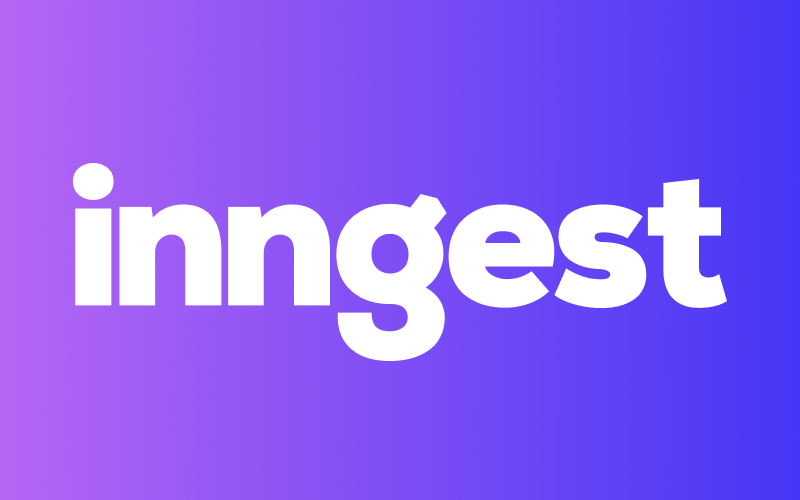
Security News
Deno 2.2 Improves Dependency Management and Expands Node.js Compatibility
Deno 2.2 enhances Node.js compatibility, improves dependency management, adds OpenTelemetry support, and expands linting and task automation for developers.

Serverless event-driven queues, background jobs, and scheduled jobs for Typescript.
Works with any framework and platform.
On any serverless platform (Next.js, Deno Deploy, RedwoodJS, AWS Lambda, and anything else) and with no extra infrastructure:
👋 Have a question or feature request? Join our Discord!
Getting started · Features · Contributing · Documentation
Install Inngest:
npm install inngest # or yarn add inngest
Write serverless functions and background jobs right in your own code:
import { Inngest } from "inngest";
const inngest = new Inngest({ name: "My App" });
// This function will be invoked by Inngest via HTTP any time
// the "app/user.signup" event is sent to to Inngest
export default inngest.createFunction(
{ name: "User onboarding communication" },
{ event: "app/user.signup" },
async ({ event, step }) => {
await step.run("Send welcome email", async () => {
await sendEmail({
email: event.data.email,
template: "welcome",
});
});
}
);
Inngest invokes functions via HTTP, so you need to serve them using an adapter for the framework of your choice. See all frameworks here in our docs. Here is an example using the Next.js serve handler:
// /pages/api/inngest.ts
import { Inngest } from "inngest";
// See the "inngest/next" adapter imported here:
import { serve } from "inngest/next";
import myFunction from "../userOnboardingCOmmunication"; // see above function
// You can create this in a single file and import where it's needed
const inngest = new Inngest({ name: "My App" });
// Securely serve your Inngest functions for remote invocation:
export default serve(inngest, [myFunction]);
// Send events
import { Inngest } from "inngest";
const inngest = new Inngest({ name: "My App" });
// This will run the function above automatically, in the background
inngest.send("app/user.signup", {
data: { email: "text@example.com", user_id: "12345" },
});
Prerequisites:
Run the following command in the packages/inngest/ directory:
pnpm dev
This will install dependencies, build, and lint the package. It will watch for changes and re-run appropriate commands.
To test changes with other local repositories, we recommend packaging the library entirely and directly installing the resulting .tgz file. This is often more reliable than linking, which can cause issues when using multiple package managers.
# in packages/inngest/
pnpm local:pack # creates inngest.tgz
# in another repo
yarn add ~/path/to/packages/inngest/inngest.tgz
You can also use this method to ship a snapshot of the library with an application. This is a nice way to generate and ship snapshot versions without requiring a release to npm.
To release to production, we use Changesets. This means that releasing and changelog generation is all managed through PRs, where a bot will guide you through the process of adding release notes to PRs.
As PRs are merged into main, a new PR (usually called Release @latest) is created that rolls up all release notes since the last release, allowing you bundle changes together. Once you're happy with the release, merge this new PR and the bot will release the package to npm for you.
Merging PRs to main (therefore both introducing a potential change and releasing to npm) requires that tests pass and a contributor has approved the PR.
Merging and releasing to previous major versions of the SDK is also supported.
backport v*.x label (e.g. backport v1.x) to a PR to have a backport PR generated when the initial PR is merged.v*.x branch creates a release PR (named Release v1.x, for example) the same as the main branch. Simply merge to release.If a local inngest.tgz isn't ideal, we can release a tagged version to npm. For now, this is relatively manual. For this, please ensure you are in an open PR branch for observability.
Decide on the "tag" you will be publishing to, which will dictate how the user installs the snapshot, e.g. if your tag is beta, the user will install using inngest@beta.
You can see the currently available tags on the inngest npm page.
NEVER use the
latesttag, and NEVER runnpm publishwithout specifying--tag.
If the current active version is v1.1.1, this is a minor release, and our tag is foo, we'd do:
yarn version 1.2.0-foo.1
yarn build
npm publish --access public --tag foo
You can iterate the final number for each extra snapshot you need to do on a branch.
FAQs
Official SDK for Inngest.com. Inngest is the reliability layer for modern applications. Inngest combines durable execution, events, and queues into a zero-infra platform with built-in observability.
We found that inngest demonstrated a healthy version release cadence and project activity because the last version was released less than a year ago. It has 4 open source maintainers collaborating on the project.
Did you know?

Socket for GitHub automatically highlights issues in each pull request and monitors the health of all your open source dependencies. Discover the contents of your packages and block harmful activity before you install or update your dependencies.

Security News
Deno 2.2 enhances Node.js compatibility, improves dependency management, adds OpenTelemetry support, and expands linting and task automation for developers.

Security News
React's CRA deprecation announcement sparked community criticism over framework recommendations, leading to quick updates acknowledging build tools like Vite as valid alternatives.

Security News
Ransomware payment rates hit an all-time low in 2024 as law enforcement crackdowns, stronger defenses, and shifting policies make attacks riskier and less profitable.